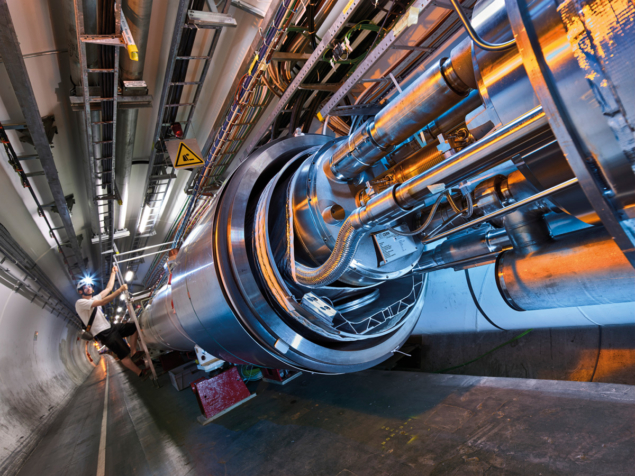Large research infrastructures are essential drivers of economic progress, and particle physicists have a duty to make this message loud and clear, argues Rolf Heuer.

Science, from the immutable logic of its mathematical underpinnings to the more fluid realms of the social sciences, has carried us from our humble origins to an understanding of such esoteric notions as gravitation and quantum mechanics. This knowledge has been applied to develop devices such as GPS trackers and smartphones – a story repeated in countless domains for a century or more – and it has delivered new tools for basic research along the way in a virtuous circle.
While it is undeniable that science has led us to a better world than that inhabited by our ancestors, and that it will continue to deliver intellectual, utilitarian and economic progress, advancement is not always linear. Research has led us up blind alleys, and taken wrong turnings, yet its strength is its ability to process data, to self-correct and to form choices based on the best available evidence. The current coronavirus pandemic could prove to be a great educator in the methods of science, demonstrating how the right course of action evolves as the evidence accumulates. We’ve seen all too clearly how badly things can go wrong when individuals and governments fail to grasp the importance of evidence-based decision making.
Fundamental science has to make its case not only on the basis of cultural wealth, but also in terms of socioeconomic benefit. In particle physics, we also have no shortage of examples. These go well beyond the web, although an economic impact assessment of that particular invention is one that I would be very interested in seeing. As of 2014, there were some 42,200 particle accelerators worldwide, 64% of which were used in industry, a third for medical purposes and just 3% in research – not bad for a technology invented for fundamental exploration. It’s a similar story for techniques developed for particle detection, which have found their way into numerous applications, especially in medicine and biology.
The benefits of Big Science for economic prosperity become more pertinent if we consider the cumulative contributions to the 21st-century knowledge economy, which relies heavily on research and innovation. In 2018, more than 40% of the CERN budget was returned to industry in its member-state countries through the procurement of supplies and services, generating corollary benefits such as opening new markets. Increasing efforts, for example by the European Commission, to require research infrastructures to estimate their socioeconomic impact are a welcome opportunity to quantify and demonstrate our impact.
CERN has been subject to economic impact assessments since the 1970s, with one recent cost–benefit analysis of the LHC, conducted by economists at the University of Milan, concluding with 92% probability that benefits exceed costs, even when attaching the very conservative figure of zero to the value of the organisation’s scientific discoveries. More recent studies (CERN Courier September 2018 p51) by the Milan group, focusing on the High-Luminosity LHC, revealed a quantifiable return to society well in excess of the project’s costs, again, not including its scientific output. Extrapolating these results, the authors show that future colliders at CERN would bring similar societal benefits on an even bigger scale.
Across physics more broadly, a 2019 report commissioned by the European Physical Society found that physics-based industries generate more than 16% of total turnover and 12% of overall employment in Europe – representing a net annual contribution of at least €1.45 trillion, and topping contributions from the financial services and retail sectors (CERN Courier January/February 2020 p9).
Of course, there are some who feel that limited resources for science should be deployed in areas such as addressing climate change, rather than blue-sky research. These views can be persuasive, but are misleading. Fundamental research is every bit as important as directed research, and through the virtuous circle of science, they are mutually dependent. The open questions and mind-bending concepts explored by particle physics and astronomy also serve to draw bright young minds into science, even if individuals go on to work in other areas. Surveys of the career paths taken by PhD students working on CERN experiments fully bear this out (CERN Courier April 2019 p55).
In April 2020, as a curtain-raiser to the update of the European Strategy for Particle Physics, Nature Physics published a series of articles about potential future directions for CERN. An editorial pointed out the strong scientific and utilitarian case for future colliders, concluding that: “Even if the associated price tag may seem high – roughly as high as that of the Tokyo Olympic Games – it is one worth paying.” This is precisely the kind of argument that we as a community should be prepared to make if we are to ensure continuing exploration of fundamental physics in the 21st century and beyond.





